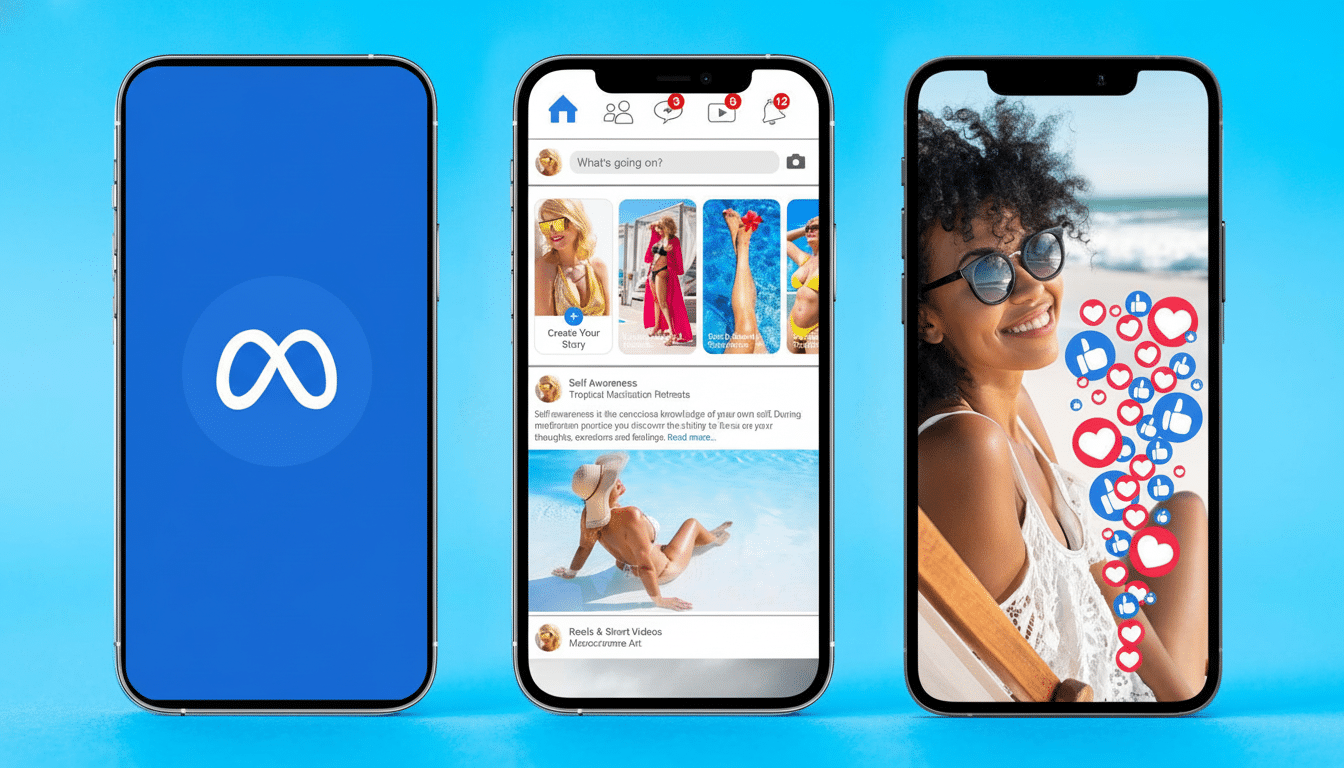If your Facebook Reels feed seems overrun by surreal pets, uncanny cooking hacks, or photoreal people who don’t exist, you’re not imagining it. AI-generated clips are overwhelming short-form video, and Facebook’s recommendation system boosts what it thinks you’ll watch — regardless of whether you actually like doing so or just stopped to watch a train wreck.
What Changed in Your Facebook Reels Feed and Why
Reels is built for speed and attention-optimized. It monitors time spent watching, replays, comments, and shares, even down to a brief pause. And if you pause on an AI video — for any reason, even just curiosity — that “dwell” can be thought of as a positive signal. Stack some of those interactions, and the algorithm learns preference and serves up more of the same.
- What Changed in Your Facebook Reels Feed and Why
- The Feedback Loop That Powers AI Reels Recommendations
- Meta’s AI Content Strategy and Labeling Approach
- Why the Supply of AI Reels Content Has Exploded
- How to See Less AI in Facebook Reels, Step by Step
- What It Means for Creators and Social Platforms
- The Bottom Line on AI-Fueled Facebook Reels Feeds

Facebook’s VP of product, Jagjit Chawla, recently said in an interview that recommendations grow or die by your signals. Interact with the AI content and you get more; signal disinterest, and it tapers. The logic is simple, but the results are quick when millions of videos are fighting for micro-moments of your attention.
The Feedback Loop That Powers AI Reels Recommendations
AI clips succeed because they fare well with the metrics that ranking systems value. Generated imagery is new, surprising, and visually rich: this increases completion rates and replays. High retention lets the system know, “You can’t get enough of this.” That creates a feedback loop: more AI videos are surfaced, more users pause, and the cycle repeats.
Negative signals do count — but you need to make them clear. “Scroll past quickly” is weaker than tapping “Not Interested.” It’s a much stronger gesture than just ignoring the page. While passive behavior outnumbers explicit feedback among ranking inputs, it is eclipsed by the latter.
Meta’s AI Content Strategy and Labeling Approach
Meta has made heavy use of AI for content discovery and creation. The company has said that an increasingly large portion of what people see in Feed and Reels is recommended by AI rather than from accounts they already follow. On the supply side, Meta introduced “Made with AI” labels and detection features across Facebook and Instagram to make generative tools’ use more transparent.
Those labels don’t alter the phenomenon being recommended, but they do inform users about what it is they’re seeing. And AI-first tools — everything from image-to-video generators to auto-editing apps — now make it possible for creators to produce eye-popping clips at near-zero marginal cost. The end product is a larger pipeline of synthetic content rushing into the recommendation system each day.
Why the Supply of AI Reels Content Has Exploded
Three elements are contributing to the surge. First, the tools are easier: consumer-grade generators can create credible simulated imagery in minutes. Second, the incentives are there: creators are pursuing reach, and visually over-the-top or hyper-satisfying AI scenes generally outperform normal footage. Third, distribution favors volume: Accounts can post dozens of AI variations to see what sticks.

Industry reporting, as well as Meta’s own earnings commentary, reinforces the trend: daily plays of Reels continue to rise into the billions, and the recommendation engine is focusing on engagement over source. In a scenario where the supply multiplication is extreme and the system has no allegiance to sources, AI content becomes more noticeable.
How to See Less AI in Facebook Reels, Step by Step
If you want to lower the AI in your feed, you have to teach the system. These steps help:
- Tap Not Interested using the three-dot menu on a Reel. This is the most readily available daily signal.
- Select Show fewer from this creator or Unfollow pages that share AI-heavy clips.
- Don’t linger on AI videos, even if you do not like or comment — dwell time adds up.
- Directly watch and interact with what you want more of — whether it’s real creators, trusted sources, or topics that matter to you.
- Head to Feed preferences to see which pages you follow, and snooze or Unfollow the ones polluting your Reels with synthetic voices.
Positive signals cause your recommendations to change more quickly than straight-up avoiding.
What It Means for Creators and Social Platforms
For creators, AI knocks down barriers but raises the bar. It may take a blending of real and tasteful AI instead if those chasing this content are going to continue pushing the shock envelope. Clear labeling counts: Regulators and standards organizations, including proposals in the European Union’s digital rulebook and guidance from the U.S. Federal Trade Commission about what counts as misleading content, are nudging platforms and creators toward transparency.
For platforms, the balance is a fragile one. Over-optimizing for engagement risks crowding out human stories and trusted sources, but aggressive throttling can stifle new forms of journalism. Anticipate more tools to filter or add context around AI media, as well as algorithmic adjustments that will amplify high-quality signals while punishing repetitive “AI slop.”
The Bottom Line on AI-Fueled Facebook Reels Feeds
If your Reels appear more artificial than anything, that’s because the system is working precisely as intended — by amplifying what captures and maintains your attention. A handful of decisive signals could change that. If you want less AI, just scroll past it (or better yet, tell us that directly by tapping Not Interested) and spend your time with the creators you do want to see. You’ll lead the algorithm with your choices.

